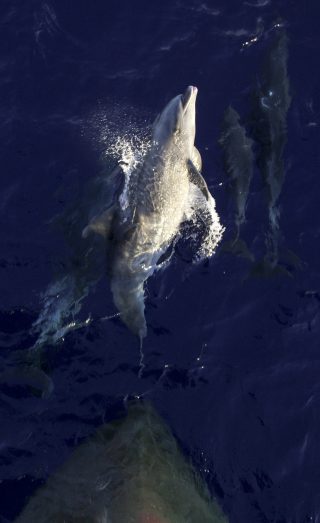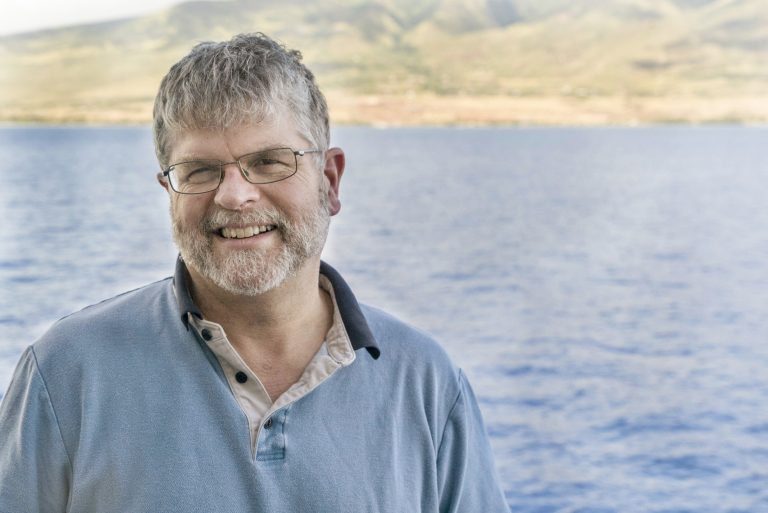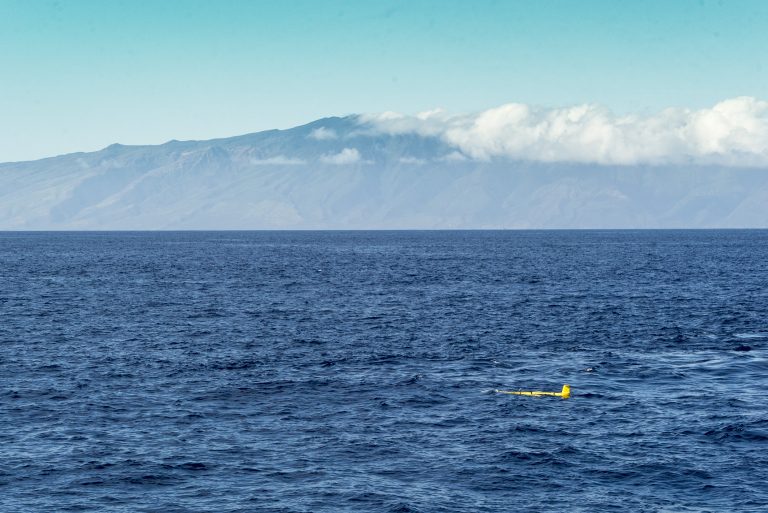The starship Enterprise had one mission: to explore strange new worlds, to seek out new life and new civilizations, to boldly go where no man has gone before. Such an assignment – minus the civilization part- could be very well applied to the Coordinated Robotics expedition. Some of the experts on Falkor are avid Star Trek fans, so when tasked with giving their ambitious planning software a name, Enterprise was the one.

To the robots (and their human counterparts), the calm waters of the ‘Au ‘Au Channel offer an environment as vivid and challenging as outer space. After all, today we know more about the surface of moon or Mars than we do about our seafloor. Every day, dive after dive, the robots’ performances are improved as they learn new ways to communicate and operate. They do so through an intense process of trial and error, in which software development plays a key role.
Dr. Brian Williams, computer scientist and electrical engineer from the Massachusetts Institute of Technology, was part of the first instalment of the Coordinated Robotics, three years ago on Falkor near Scott’s Reef, Australia. Back then he worked closely with Dr. Richard Camilli from Woods Hole Oceanographic Institution, developing algorithms to improve the performance of Camilli’s Slocum Glider. At that time, the experts aimed to be able to give it a set of goals – namely places to travel to and explore – then rate their relevance so that the system could decide the best course of action. The glider would consider variables such as bathymetry, currents, and vehicle dynamics. If a part of the mission was not possible or was too risky, it would divide each waypoint into subsets and decide which were a priority (with regards to science) in order to replan the mission following the most energy-efficient path. “The risk might be how close you are to colliding, or maybe not arriving at the rendezvous point at the end of the mission or in time. So we spent the last 2 or 3 years developing that capability. And that is what we’re running right now,” explains Dr. Williams. As if that was not complex enough, the experts have come back to Falkor and upped the ante.

Uncertainty
Knowledge about a particular underwater location might be limited, putting scientists and engineers in the uncomfortable position of sending robots into missions with varying levels of risk. The team has developed the capability for the vehicles to operate within a safety margin, thus dealing with uncertainty. Today, they want to take that capability further by specifying how much risk the scientists are willing to take, then allowing the vehicles to make decisions throughout their missions, assessing the risks and adjusting accordingly.
“Communicating with the vehicles requires the right software to be created, and they all have different languages so we’re trying to develop interfaces for each, but that’s probably not the harder part of it,” Dr. Williams says. “The harder part is the algorithm. It has multiple choices and must try them all in all possible orders… that’s a huge set of possibilities. The algorithm must be able to try something and decide ‘Oh that didn’t work, why didn’t it work?’ and then rule out different options. So a lot of the time is us trying to get the software to work at that scale.” A scale that must now be multiplied by eight: the number of vehicles being tested during this cruise.
The Campaign Trail
The first step is to control single vehicles by giving them science goals – sending them on missions that are carried out in a goal-directed and risk-aware manner. Developing the right algorithms and making sure they operate correctly in each vehicle is one challenge that the team must overcome, but once that is accomplished, the quest will be far from over. The engineers’ ultimate goal is to create a campaign of autonomous underwater vehicles, all working together in a joint mission.
“We are hoping that by the end of the cruise, we will be able to control several of the vehicles alone, but also what we want to do is control them together. So the dream is that the system would control all the vehicles and plan the missions, and then it could also help scientists and crew achieve their goals,” shares Dr. Williams.
Back in the classic Star Trek saga, it was a cliche that those wearing red uniforms would be killed in battle. Given that statistic, Dr. Richard Camilli and the engineers developing the vehicles knew they would not paint any of the robots red. Every day, the robots continue their intense immersion course, dotting the blue waters of the ‘Au ‘Au Channel with their yellow frames.



